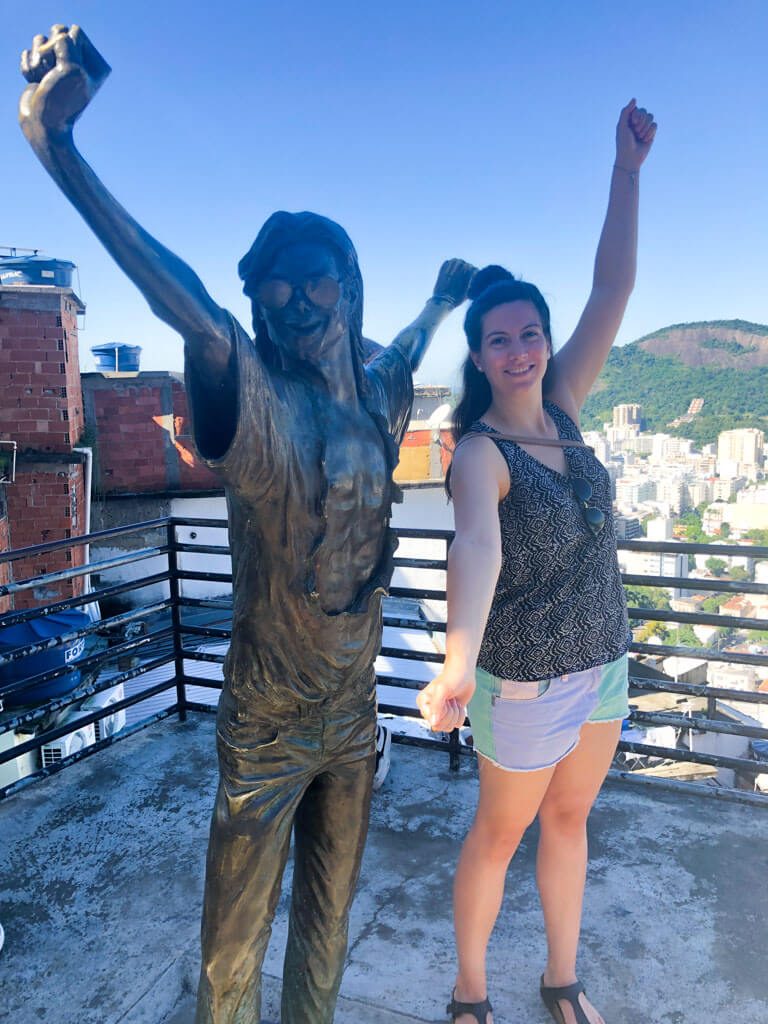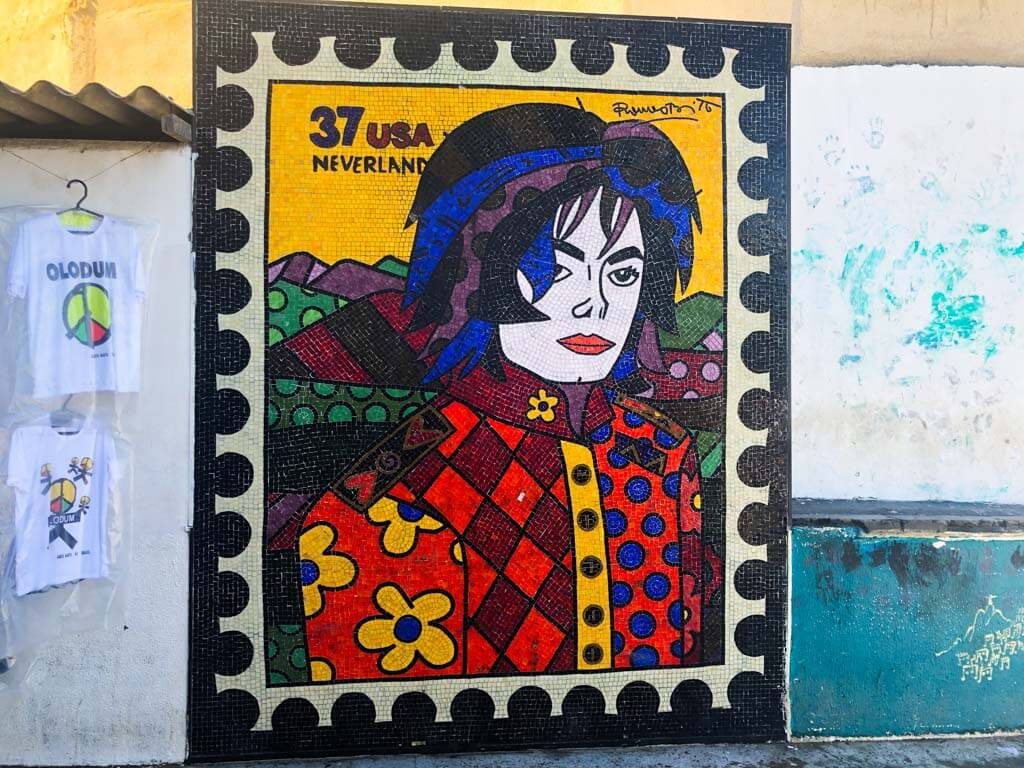I have always wanted to go to Rio de Janeiro and learn more about the differences in life of its divided population that lives so close to each other. The more excited I was when I booked a Favela Tour through Santa Marta.
What is a Favela
A favela is often referred to as an excluded area on the outskirts of a city consisting of large numbers of simple houses in its raw form. Favelas, as known today, don’t exist for such a long time, only around 70-80 years and are mostly regulated by the people living there rather than the government.
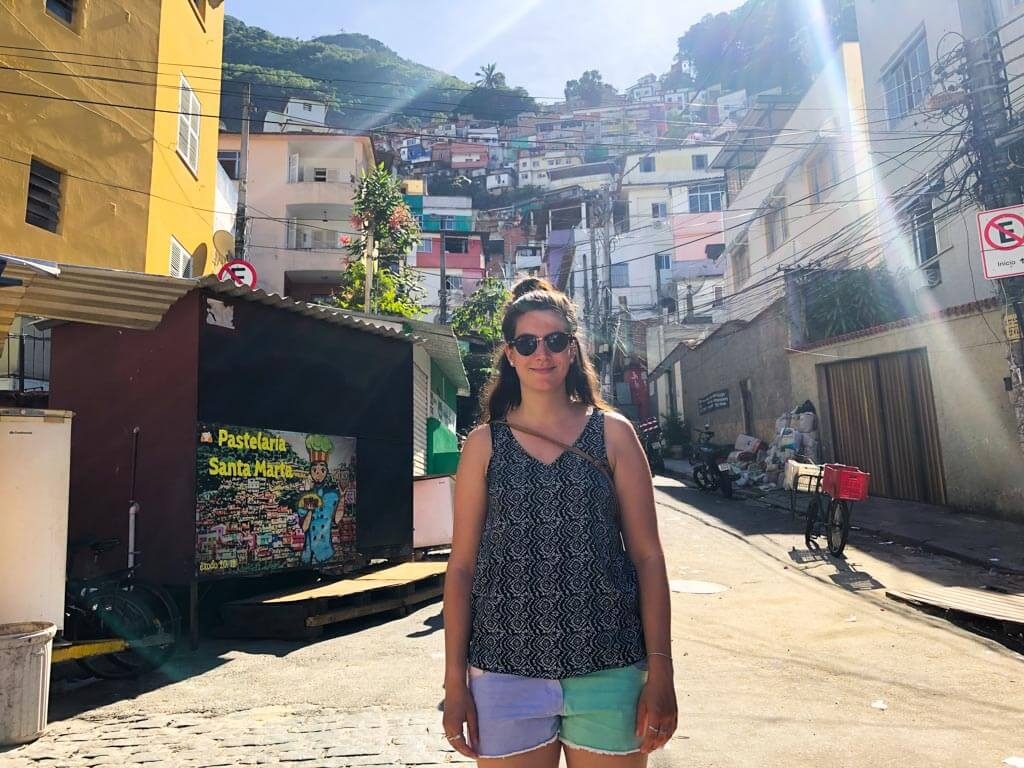
Why do Favelas exist
Favelas exist because low and middle-class people could not afford to live in the city anymore and were pushed to the outskirts. As no one really cared about the land upon a hill, people started to claim the land and build houses there. This way they did not have to live on the street.
In theory, though, the land belongs to the government. Once they recognized how fast favelas are growing, they started to actually ask for land/house taxes from the people living at the bottom. In response, the people started to build even higher as the government would not go there.
One thing that is important to understand about favelas is that not all people, who live there, are criminals. They are normal people who just try to make a living. Around 90-95% are good people, who hate the crimes themselves. Especially for older people, life in favelas can be tough as it gets harder and harder to get up the hills at some point.
People living in favelas most of the time have jobs themselves or create new job opportunities such as carrying down rubbish for people who live on the top. You will also find supermarkets, hair cutters, schools, bakeries, etc. there.
Popularity of Favelas
Thanks to Michael Jackson’s music video “they don’t really care about us”, favelas became more popular and the government started to pay some attention to their problems. For example, in some favelas, they provided a lift to go up and down the hill, water, electricity, and internet. However, for the last 3 things people need to pay for.
Main Problems in Favelas
There are 3 main problems in favelas that need to be taken care of: drug and gun traffic, rubbish collection and sexual education.
Drug and Gun Traffic
Drug and gun traffic is the most known problem of favelas and the reason why they have such a bad reputation. Sadly, it is often the police, who actually brings guns and drugs to favelas, even though they should be the one protecting the people.
Everything is always about money and surviving. Policemen themselves are not paid very well for the job they are asked to do. As they know how desperate some people living in the favelas are, they are providing an opportunity to make very fast money and lots of people take it.
Even if the police catch someone dealing drugs, they take just enough to arrest the person and then resell the rest themselves to other Favelas. It is a very corrupt system.
Rubbish Collection
The public rubbish collection happens only at the bottom of favelas. Often, people on the top don’t always bring down their rubbish which resulted in children losing their lives while playing when it started raining and a big flood or garbage hit them.
Nowadays, the situation is improving as people who go down are asked to take rubbish with them in exchange for a bit of money.
Sexual education
Sexual education is another big problem in favelas as very young families have multiple children and struggle to provide for them.
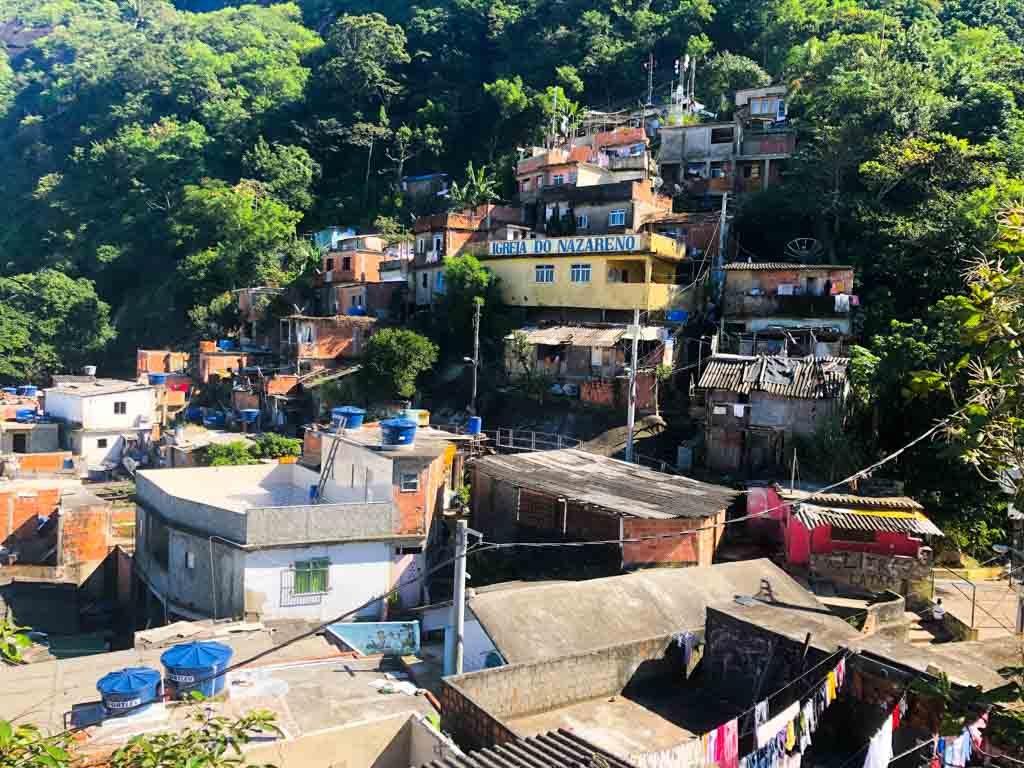
Santa Marta Favela Tour in Rio de Janeiro
We decided to do a favela tour in Rio de Janeiro with a local tour agency rather than a tourism board/chain. This way the money stays in the favelas and supports the locals as a small amount goes to each institution we visited, plus the locals who organized the tour.
I can only recommend Favela Santa Marta Tour. Our tour guide was Felipe, who is fluent in multiple languages. While we chose the English tour, you can also ask for Spanish or Portuguese.
The tour is twice a day, either at 10 am or 2 pm. You can either contact Thiago via Whatsapp directly or book via the website. The most basic tour costs around 125RS (approx. 30€) which you can either pay via PayPal or bring in cash on the day of the tour. However, there are also options available such as with pick up from accommodation, helicopter flight or other sights included.
The Santa Marta favela tour in Rio is about 2h long. You will stop at different institutions like kindergarten, post office, home of founder and souvenir shops where you can buy things to further support the locals. I bought a shirt which was designed by a 6-year-old and a hand-painted picture of Rio.
Here you can find more details about the meeting point and what to bring to the Santa Marta favela tour in Rio.
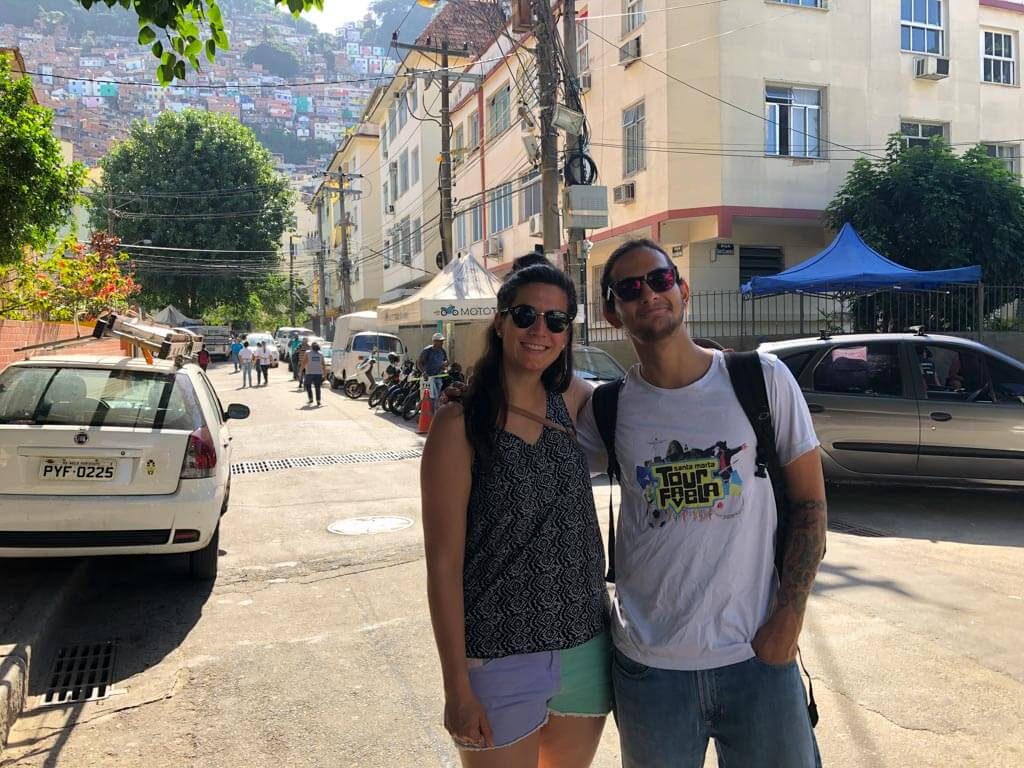
Santa Marta Favela in Rio de Janeiro
Santa Marta is the 2nd favela that was built in Rio and one of the steepest with no streets. Around 8000 people live there nowadays.
It was one of the first favelas that have been pacified by the police. It is said that there is no more drug trafficking since 2008. Therefore, it is taken as an idol/example favela for other favelas to learn from. They even have a favela president who communicates to the government, politicians and so on.
What we can learn from Favelas
Just like from every sad situation/event, we can always take some life lessons with us. Here are 3 things we can learn from favelas.
Team Work
If not because of the teamwork of the people, life in favelas would not be possible. Favela inhabitants possess a strong sense of community and lend each other a hand when needed, be it carrying down rubbish, carrying up heavy things, building a house together, teaching each other, taking care of each other’s children and so on.
Everything is possible mindset
Remaining a positive attitude and mindset in hard times can be difficult, but at least a handful of favela inhabitants must have done so. They learned how to build houses into a mountain where the government wouldn’t even build and set up a working system where there was none.
Creativity
If favela people are one thing, then it is creative. Not only are some favelas painted very colorful, but people created new work opportunities for themselves, such as carrying goods up and down, setting up favela tours, opening a hair cutter business, supermarket, souvenir shops with their own designed prints, etc.
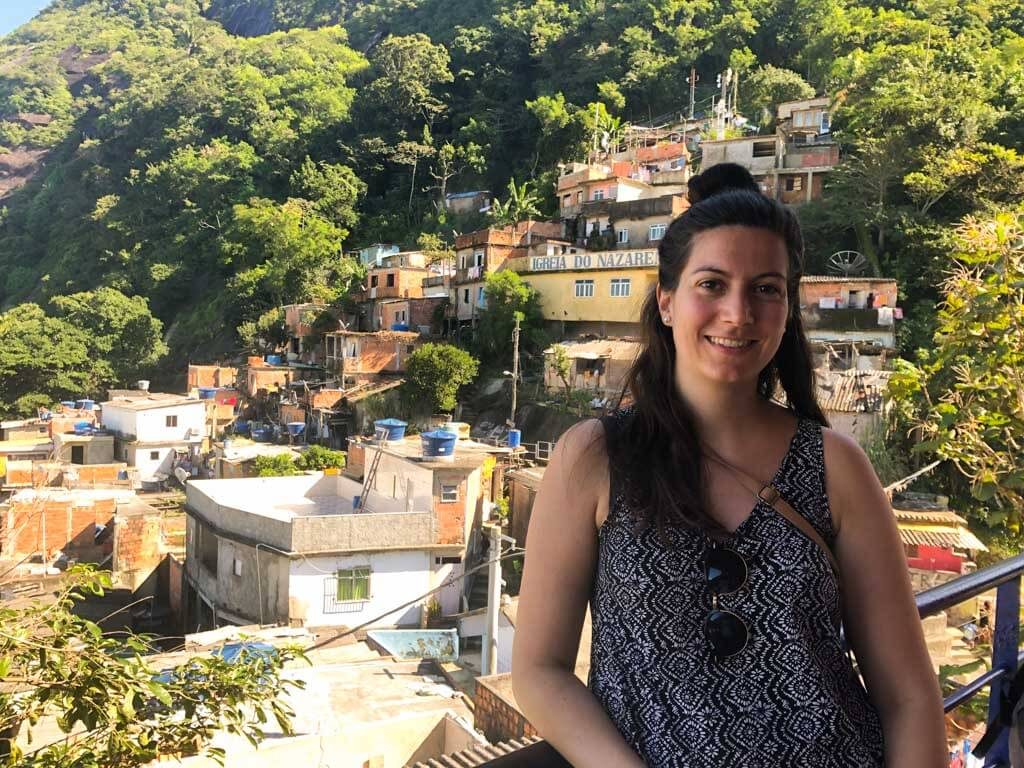
Personal opinion about my favela tour in Rio
For me, the Santa Marta favela tour in Rio was very eye-opening and helped to get rid of my prejudices, such as that all people who live there are criminals. This is simply not true and rather the opposite.
I enjoyed seeing how their own created community works very well and how they help each other for a brighter future. The most interesting fact was that some people, who could afford to live somewhere else, chose to stay in the favela.
It is a good life lesson to always look at what is behind and not let the first impression and media shape your beliefs. It is better to find out yourself than carrying on what others said without having made your own picture of the situation. Saying that not all favelas run like the one we visited and there are much more dangerous ones, so don’t get me wrong.
I hope that the Santa Marta favela can help other favelas to function well in the future as well.



